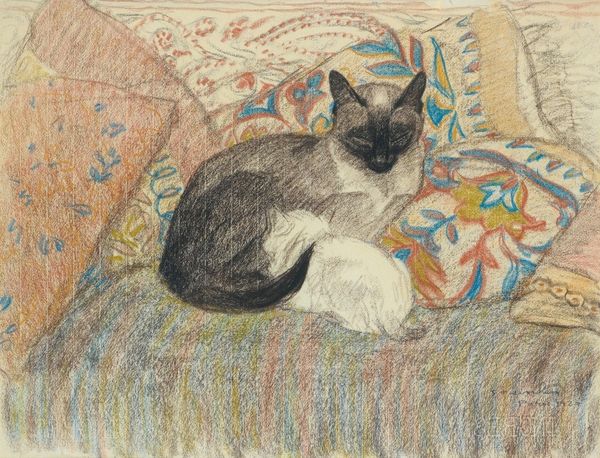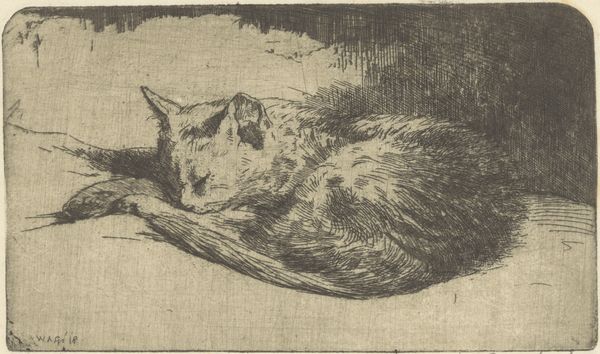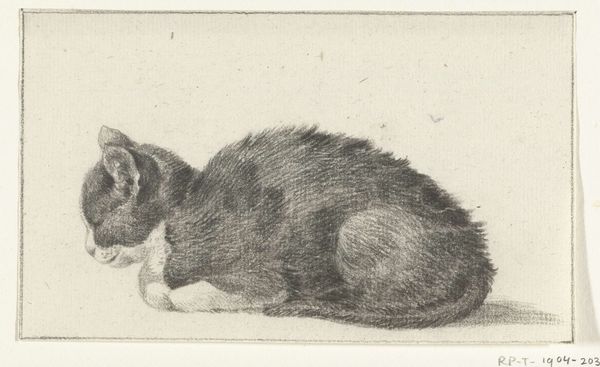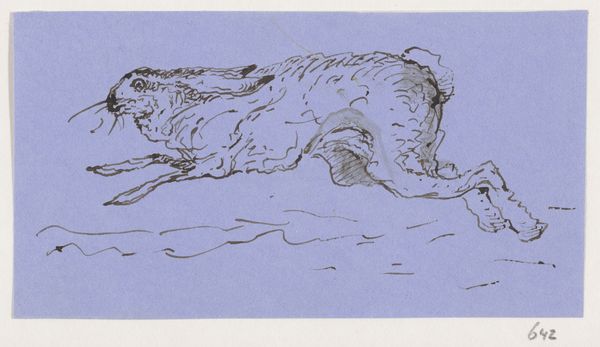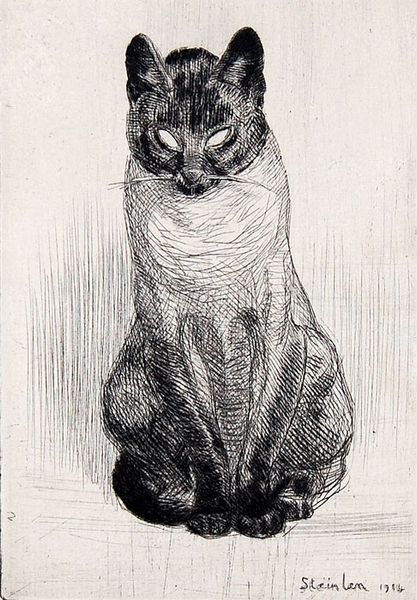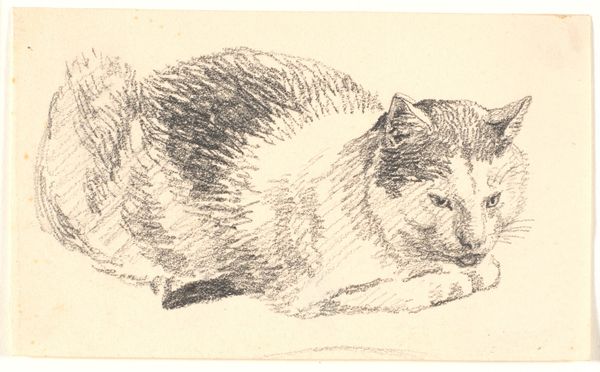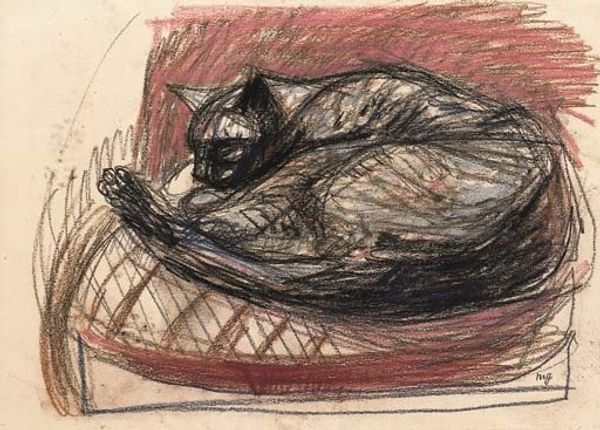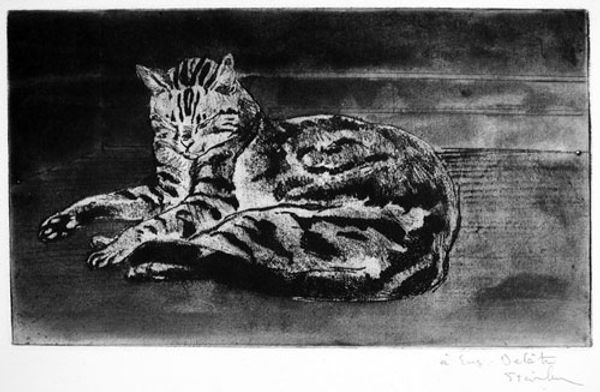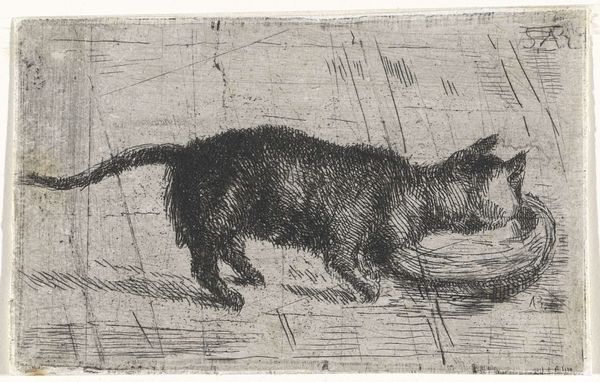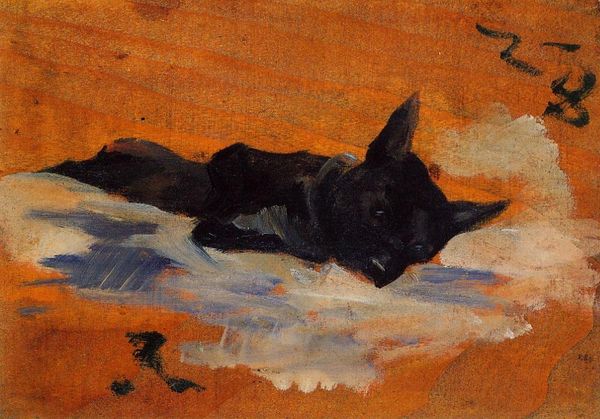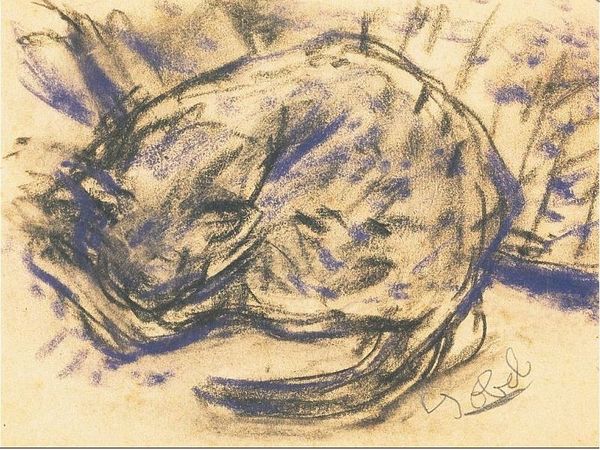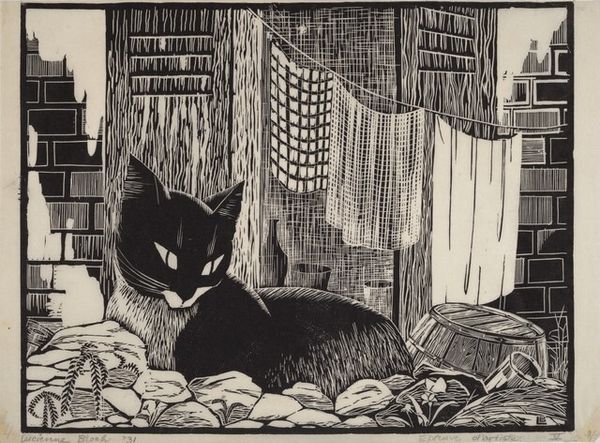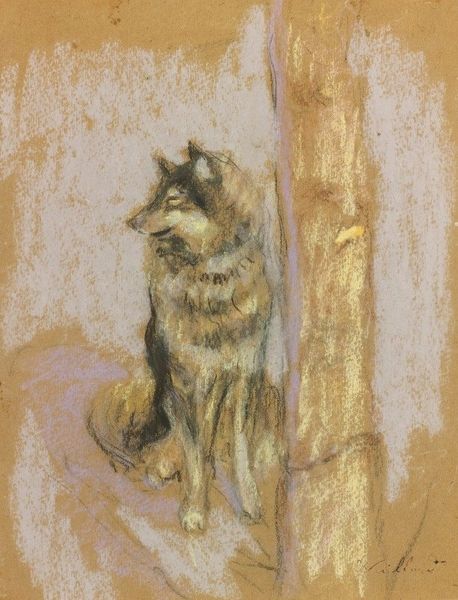
drawing, print, etching
#
portrait
#
drawing
#
art-nouveau
# print
#
etching
#
figuration
#
symbolism
Copyright: Public domain
Editor: Here we have "Two Cats," an etching by Théophile Alexandre Steinlen. What strikes me is its quiet intimacy, like a stolen glance at a private moment of feline domesticity. What do you see in this piece? Curator: It's tempting to just appreciate the charming scene, but I think it invites a deeper consideration of class and representation in fin-de-siècle Paris. Steinlen was deeply invested in portraying the lives of ordinary people, particularly those on the margins. Do you see any signs of that here? Editor: Well, they're just cats, right? Seems pretty straightforward. Curator: Precisely! Think about it: cats, particularly strays, were often associated with poverty and the bohemian lifestyle. These aren't idealized, pampered pets. They feel…real. And notice the stylistic echoes of Art Nouveau, a movement that was both aesthetically revolutionary and increasingly accessible to a wider audience through printmaking. Does this suggest anything to you about the intended audience for this kind of work? Editor: I suppose it makes it accessible, visually and materially, to the people he's representing? It becomes almost democratic? Curator: Exactly. And it raises questions about who has the right to depict and interpret whose lives. Was Steinlen an empathetic observer, or was he exoticizing poverty for a middle-class audience? Editor: That's a complex question, and it definitely makes me reconsider my initial reaction. It's not just a cute cat picture. Curator: Indeed. Art always operates within a web of social and historical power dynamics, even when it seems simple on the surface. Editor: This has certainly given me a new appreciation for thinking about context! Thanks for making me rethink the way art and the world interconnect.
Comments
No comments
Be the first to comment and join the conversation on the ultimate creative platform.
